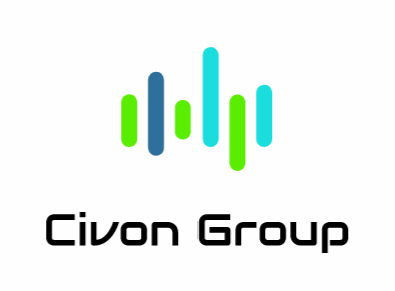
Introduction
In an era where consumer expectations and market dynamics evolve rapidly, the ability to gather and effectively incorporate feedback across different experience domains is crucial for any organization looking to thrive. This article explores the significant role of feedback across domains in areas such as product development, customer service, employee engagement, and user experience design. When harnessed correctly, feedback can illuminate the path to innovation, customer satisfaction, and continuous improvement.
By understanding and leveraging feedback from various domains, organizations can craft proactive solutions that anticipate needs and exceed expectations. However, navigating the feedback landscape demands more than just collection—it requires a strategic approach to integration that respects the diversity of feedback sources and types. Through this exploration, we aim to equip you with the knowledge and tools necessary to transform feedback into your organization’s most valuable asset.
As we journey through the intricacies of gathering and incorporating feedback, remember that the goal is not merely to listen but to understand and act. Join us as we uncover strategies to enhance your feedback mechanisms and integrate them seamlessly across all experience domains, fostering a culture of excellence and innovation.
Understanding Feedback Across Domains
Feedback is the lifeblood of improvement across all sectors and domains. Whether it’s a customer’s review of a product, an employee’s input during a performance review, or a user’s thoughts on a digital interface, feedback across domains shares the common goal of propelling growth, enhancing satisfaction, and fostering innovation. But what makes feedback across different experience domains so crucial, and how can organizations effectively navigate this landscape?
The Significance of Feedback
At its core, feedback across domains refers to the valuable insights gathered from various stakeholders involved in the lifecycle of a product or service. This includes, but is not limited to, direct consumers, employees, users of digital platforms, and even the broader community impacted by an organization’s operations. Feedback serves as a mirror, reflecting the real-world application and impact of products and services, enabling organizations to align their offerings more closely with the needs and expectations of their audience.
Types of Feedback
- Customer Feedback: Insights from those who purchase or use your products or services. This feedback is pivotal in understanding consumer satisfaction and areas for product or service enhancement.
- Employee Feedback: Input from your workforce on their work environment, processes, and what the organization can do to improve productivity and job satisfaction. It fosters a culture of continuous improvement and engagement.
- User Feedback: Specifically from users interacting with digital interfaces, highlighting usability issues, design flaws, or feature requests. It’s essential for refining user experience (UX) and interface design.
- Stakeholder Feedback: From investors, partners, or community members, providing a broader perspective on your organization’s impact and strategic direction.

Role in Continuous Improvement
Feedback across domains doesn’t just highlight what’s wrong; it also underscores what’s working well, what can be improved, and how. It enables organizations to make informed decisions, prioritize development efforts, and foster innovation. By actively seeking and thoughtfully analyzing feedback, businesses can adapt to changes more swiftly, meet their audience’s needs more effectively, and stay ahead in competitive markets.
Methods for Gathering Feedback
Gathering feedback is a strategic endeavor that requires a mix of methods to capture the full spectrum of insights across experience domains. Here’s how organizations can effectively collect feedback:
Surveys and Questionnaires
These tools are versatile and can be tailored to gather specific information from different groups. Whether it’s customer satisfaction, employee engagement, or user experience, surveys can provide quantitative and qualitative data that is crucial for making informed decisions.
Interviews and Focus Groups
Direct conversations or group discussions offer deep insights into the motivations, feelings, and preferences of participants. These methods are particularly valuable for exploring complex issues or generating new ideas.
Usability Testing
In the realm of digital products and services, usability testing involves observing users as they interact with a system. This method is invaluable for identifying navigational difficulties, design flaws, or features that may enhance the user experience.
Analytics and Data Analysis
Digital platforms generate vast amounts of data on how users interact with online services. Analyzing this data can reveal patterns, preferences, and pain points that might not be evident through other feedback methods.
Social Media and Online Reviews
The digital age has made it easier for consumers to share their experiences with a global audience. Monitoring social media platforms and online review sites can provide real-time feedback on public perception and satisfaction levels.
Incorporating Feedback into Strategy
Once feedback is gathered, the next critical step is to incorporate it effectively into organizational strategy and operations. This process involves several key actions to ensure feedback leads to meaningful change and improvement.
Analyzing Feedback for Actionable Insights
The first step in incorporating feedback is to analyze it comprehensively. This involves categorizing feedback based on themes, urgency, and feasibility. Tools and techniques like sentiment analysis, thematic coding, and impact-effort matrices can help in prioritizing feedback that can have the most significant positive impact on the organization.
Prioritizing Feedback for Implementation
Not all feedback is created equal, and not all of it can be acted upon immediately. Organizations must prioritize feedback based on strategic goals, resource availability, and potential return on investment. This prioritization ensures that efforts are focused on areas that will provide the greatest benefits.
Designing Feedback Loops for Continuous Improvement
For feedback to be truly valuable, it must lead to continuous improvement. This means establishing feedback loops where insights lead to actions, those actions are evaluated, and the results inform the next cycle of feedback. Such loops ensure that organizations remain agile, responsive, and continually evolving in line with stakeholder needs and expectations.
Challenges and Solutions in Feedback Integration
Incorporating feedback across different experience domains is not without its challenges. Here are some common obstacles organizations face and strategies to overcome them:
Overcoming Resistance to Change
Change, even when beneficial, can be met with resistance. To mitigate this, organizations should foster a culture that values feedback and sees change as an opportunity for growth. Engaging stakeholders in the change process and demonstrating the benefits of feedback-driven improvements can also help reduce resistance.
Ensuring Feedback is Constructive and Actionable
Not all feedback is immediately useful. Organizations need to develop criteria for evaluating feedback, ensuring it is constructive, actionable, and aligned with strategic objectives. This might involve training teams to give and receive feedback effectively or employing tools to filter and analyze feedback efficiently.
Balancing Diverse Feedback from Different Domains
Feedback from various domains can sometimes be conflicting. Organizations must navigate these complexities by seeking common themes, compromising where possible, and making strategic decisions that balance the diverse needs and expectations of their stakeholders.
Conclusion
Gathering and incorporating feedback across experience domains is a dynamic and ongoing process that can significantly enhance organizational performance, innovation, and stakeholder satisfaction. By understanding the importance of feedback, employing diverse methods to gather it, and strategically integrating insights into operations, organizations can stay aligned with their stakeholders’ evolving needs and expectations.
As we’ve explored, the journey of feedback integration is filled with opportunities and challenges. Yet, the rewards of creating responsive, agile, and continuously improving organizations are immense. We encourage all businesses to embrace feedback as a vital tool in their quest for excellence.
Call to Action
For more insights into effectively gathering and incorporating feedback across your organization, visit civongroup.com. Discover our range of services designed to help you make the most of the feedback you receive, driving your business forward with informed, strategic decisions.
Additional Reading
- SessionLab provides an in-depth look at various effective feedback techniques and methods. It discusses unique approaches like the “Thirty-Five” for debriefing, “One Breath Feedback” for quick and focused responses, and the “AIR Feedback Model” for constructive criticism. These techniques are designed to enhance the feedback process, making it more engaging and effective for teams and individuals alike. For more detailed exploration of these techniques, consider referencing their article for insights on improving feedback culture within organizations.
- WordStream offers a practical guide on incorporating customer feedback into your marketing strategy. It highlights six easy ways to use customer feedback to improve business and marketing efforts, including measuring performance with customer satisfaction scores, creating customer journey maps, and using social proof in ads. This resource is particularly useful for understanding how to leverage feedback for strategic advantage and enhance customer engagement.



Recent Comments